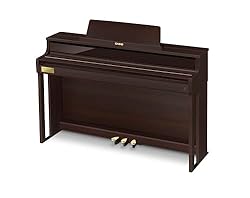Table of Contents
Tips for Learning Piano Faster
Embarking on the journey of learning the piano can be exhilarating yet daunting. Whether you are a complete beginner or someone brushing up on your skills, mastering the piano requires patience, commitment, and the right strategies. In this introduction, we will outline essential tips for learning the piano faster, helping you to see progress in your playing abilities more efficiently. By focusing on practical methods like setting realistic goals, incorporating effective practice routines, and utilizing technological tools, you can optimize your learning experience and enjoy the rich world of piano music.
Focused Practice Techniques for Rapid Improvement
Incremental Mastery
Break down pieces into small, manageable sections. Focus on mastering one section at a time before moving to the next. Begin with just a few measures, ensuring you play them correctly and comfortably. Gradually increase the length of each practice segment as you gain confidence. This technique helps in building muscle memory and improves precision.
BEATBIT Piano Notes Guide for Beginner, Removable Piano Keyboard Note Labels for Learning, 88-Key Full Size, Made of Silicone, No Need Stickers, Reusable and Comes with Box (Classic Black)
$14.99 (as of October 26, 2025 01:55 GMT -07:00 - More infoProduct prices and availability are accurate as of the date/time indicated and are subject to change. Any price and availability information displayed on [relevant Amazon Site(s), as applicable] at the time of purchase will apply to the purchase of this product.)Jazz Improvisation Made Simple: Learn Jazz Faster, Improvise Effortlessly, and Become the Musician You’ve Always Wanted to Be
$2.99 (as of October 26, 2025 01:55 GMT -07:00 - More infoProduct prices and availability are accurate as of the date/time indicated and are subject to change. Any price and availability information displayed on [relevant Amazon Site(s), as applicable] at the time of purchase will apply to the purchase of this product.)John Thompson's Modern Course for the Piano - First Grade (Book Only): First Grade - English
$6.99 (as of October 26, 2025 01:55 GMT -07:00 - More infoProduct prices and availability are accurate as of the date/time indicated and are subject to change. Any price and availability information displayed on [relevant Amazon Site(s), as applicable] at the time of purchase will apply to the purchase of this product.)Don't Tap The White Tile (Piano Tiles)
$0.00 (as of October 26, 2025 01:55 GMT -07:00 - More infoProduct prices and availability are accurate as of the date/time indicated and are subject to change. Any price and availability information displayed on [relevant Amazon Site(s), as applicable] at the time of purchase will apply to the purchase of this product.)Slow Practice
Start practicing at a slower tempo than the piece requires. This allows you to concentrate on accuracy, finger placement, and dynamics without feeling rushed. As you become more comfortable, gradually increase the tempo. Slow practice helps in embedding the correct movements and reduces the chance of making mistakes when playing at full speed.
Hands Separate Practice
Practice the left hand and right hand separately before combining them. This method helps to ensure that each hand knows its part perfectly. Once you can play both hands individually with confidence, start practicing them together. This technique is particularly useful for complex passages where the hands have significantly different parts to play.
Use a Metronome
Incorporate a metronome into your practice to maintain a consistent tempo. Start with a slow tempo and increase it gradually. This helps develop a precise sense of timing and rhythm. Practicing with a metronome ensures that you are not rushing difficult passages or slowing down during easier ones.
Spot Practice
Identify the challenging sections of the piece and focus extra practice time on these “trouble spots.” Isolate a difficult measure or phrase and play it repeatedly until it becomes as fluid as the rest of the piece. This targeted approach helps in overcoming specific technical hurdles and ensures overall smoothness.
88 Key Piano Keyboard Beginner Electric Digital Piano with Semi Weighted Keys,Sustain Pedal, Power Supply, Stand, Carrying Case,HeadphonesA1
$104.99 (as of October 25, 2025 15:06 GMT -07:00 - More infoProduct prices and availability are accurate as of the date/time indicated and are subject to change. Any price and availability information displayed on [relevant Amazon Site(s), as applicable] at the time of purchase will apply to the purchase of this product.)Donner DDP-300 Digital Piano with 88 Graded Hammer Action Weighted Keys, Record, Bluetooth, 10 Voices, 4 Reverb, Speakers, Professional Full Fize Key Keyboard Electric Dark Rose
16% OffCasio Celviano AP-750BN – 88-Key Digital Console Piano | Smart Hybrid Hammer Action Keyboard CELVIANO Edition | 39 Built In Tones | Rosewood
$3,999.99 (as of October 25, 2025 15:06 GMT -07:00 - More infoProduct prices and availability are accurate as of the date/time indicated and are subject to change. Any price and availability information displayed on [relevant Amazon Site(s), as applicable] at the time of purchase will apply to the purchase of this product.)Donner 61 Key Keyboard Piano, Electric Piano Keyboard Kit with 249 Voices, 249 Rhythms - Includes Piano Stand, Stool, Microphone, Gift for Beginners, Black (DEK-610S)
33% OffVisualization
Spend time away from the piano visualizing yourself playing the piece. Imagine the finger movements, the sound, and the overall feel. This mental practice can be surprisingly effective in reinforcing memory and improving performance when you return to the piano.
Layered Practice
Break pianistic skills into layers to practice them separately before integrating them. For example, first focus on playing the correct notes with the right rhythm but without worrying about dynamics or articulation. Once comfortable, add dynamics, then articulation, and so on. This method helps to build a deeper and more structured understanding of the piece.
Regular Short Sessions
Instead of long, infrequent practice sessions, opt for shorter, more regular sessions. Frequent repetitions help to reinforce learning and maintain progress. Aiming for consistent daily practice, even if it’s just 20 minutes, can lead to faster improvement than sporadic, longer practices.
How to Master Piano Scales Quickly
Learning and mastering piano scales is a fundamental part of becoming proficient at the piano. Here’s an expanded look at how to do it quickly and effectively.
Many beginners make the mistake of trying to play scales quickly right from the start. Begin slowly to ensure accuracy and correct finger positioning. Gradually increase the tempo as you become more comfortable.
Practicing with a metronome can help you build a consistent rhythm. Initially set the metronome to a slower tempo and gradually increase it as your proficiency improves. This will aid in developing a steady tempo and precision.
Proper fingering is essential for playing scales smoothly. Pay careful attention to your finger placements and transitions between notes. Practicing with the correct fingering ensures you form good habits from the start.
Working on each hand separately before combining them can help you master the scales more effectively. Once you are comfortable playing with each hand independently, start practicing with both hands together.
Recognizing and practicing common scale patterns, such as major and minor scales, will make it easier to transfer this knowledge to new scales. Understanding the structure of scales simplifies the learning process.
Varying the rhythms when practicing scales can help you become more versatile. Try playing scales in triplets, dotted rhythms, or syncopated patterns to improve your rhythmic skills.
Use scales in actual pieces of music to reinforce what you have learned and understand their practical applications. This helps to see the relevance and importance of scales in real-world piano playing.
Recording your practice sessions allows you to listen back and identify areas for improvement. This can provide valuable feedback and help you address any issues you may not have noticed during play.
Regular, consistent practice is crucial. Even short, daily practice sessions are more effective than longer, less frequent ones. Make scales a part of your daily routine.
If possible, work with a piano teacher who can provide personalized feedback and correct any issues early. Professional guidance can accelerate your learning process significantly.
Using Metronomes to Improve Timing and Speed
Integrating a metronome into your piano practice is a time-tested method to enhance your sense of timing and speed. A metronome provides a consistent beat that helps guide your tempo, ensuring you stay on track whether you’re playing slowly or at a rapid pace. Here’s how you can make the most of this essential tool:
When learning a new piece, begin by setting the metronome to a slow tempo. This allows you to focus on accuracy and note recognition without the pressure of speed. As you become more comfortable with the notes and rhythms, incrementally increase the tempo. Small adjustments can help you build speed without sacrificing precision.
Using a metronome effectively involves setting specific goals for your practice sessions. For example, aim to play a passage flawlessly at a certain tempo before moving on. This gives you a clear target and helps measure progress. Knowing you’ve met your goal at one speed before moving to the next ensures a solid foundation of timing and accuracy.
Utilize the metronome to practice a variety of rhythms within your pieces. For instance, if a piece involves complex time signatures or syncopated rhythms, the metronome can help you internalize these patterns and maintain a consistent pulse. Try practicing with subdivisions, like using a metronome set to eight notes or sixteenth notes, to further refine your timing.
Isolate challenging sections of your music and practice them with the metronome at a slower pace. Gradually increase the speed as you become more confident. This method allows for detailed attention to troublesome spots and ensures they don’t disrupt your overall performance. Consistency in practice leads to improvement.
Incorporate tempo variations into your practice. For example, play a piece at its normal tempo, then try it slightly faster or slower. This not only keeps practice sessions engaging but also improves your flexibility in adapting to different performance conditions. This technique reinforces your internal metronome, enhancing your overall musicality.
With technological advancements, a wide range of metronomes is available, from traditional mechanical ones to modern digital versions with multiple functionalities. Many apps now offer customizable beats, complex rhythms, and even visual cues. Choose a metronome that suits your practicing needs, whether you prefer a simple click or advanced features.
In summary, regularly practicing with a metronome not only sharpens your timing but also boosts your ability to play at varying tempos with ease. It is an indispensable tool in your piano learning journey that ensures you build a solid and reliable rhythmic foundation.
Breaking Down Complex Pieces into Manageable Parts
When approaching a complex piano piece, it’s crucial to break it down into smaller, more manageable parts. This strategy can significantly accelerate the learning process and enhance comprehension and execution. Here’s how to effectively break down complex pieces:
Segment the Piece
Divide the piece into sections such as verses, choruses, bridges, or other logical segments. This allows you to focus on mastering one part at a time instead of feeling overwhelmed by the entire composition.
Isolate Difficult Measures
Identify and isolate measures that present specific challenges, such as intricate fingerings or rapid note sequences. Practice these measures repeatedly and slowly before reintegrating them into the piece.
Master Hands Separately
Work on each hand’s part individually to understand and perfect the fingerings and rhythms. Once comfortable, gradually combine both hands, starting slowly and increasing speed as proficiency improves.
Use a Metronome
Practice with a metronome to ensure consistent rhythm and tempo. Start slowly to focus on accuracy, then gradually increase the tempo as you become more comfortable with the piece.
Apply the Chunking Technique
Group notes together in “chunks” based on musical phrases or patterns. Focus on playing these chunks smoothly before moving on to the next section. This technique helps with memory retention and fluidity.
Incorporate Regular Breaks
Integrate short, regular breaks into practice sessions to maintain focus and prevent mental fatigue. This helps in retaining learned material and improving overall practice efficiency.
Avoiding Common Mistakes that Slow Down Learning
One of the most frequent mistakes new piano learners make is not committing to a regular practice schedule. Consistency is crucial in developing muscle memory and improving skills. It’s essential to set aside a specific time each day dedicated solely to practice. Even short daily sessions can significantly impact learning speed, as opposed to irregular, lengthy sessions.
Jumping straight into playing without proper warm-ups can hinder progress and increase the risk of injury. Warm-ups help to prepare your muscles and improve blood flow, making it easier to execute challenging pieces. Make warming up a non-negotiable part of your practice routine to enhance flexibility and coordination.
Proper fingering is fundamental in piano playing. Neglecting fingering guidelines can lead to inefficient technique and difficulty in playing more complex pieces. Take the time to learn and practice the correct fingering for scales and pieces. Consistent fingering helps build muscle memory, allowing for smoother and faster playing.
Many learners are tempted to play pieces at full speed without having mastered them at a slower pace. This can result in mistakes and reinforce bad habits. Start slow to ensure accuracy and gradually increase the tempo. Speed will naturally develop as your proficiency improves.
Timing and rhythm are critical in piano playing. Failing to use a metronome can lead to uneven tempos and timing issues. A metronome helps you maintain a steady beat and develop a strong sense of timing, which is essential for playing in ensemble settings or more complex compositions.
New piano learners often try to play with both hands simultaneously from the beginning. This approach can be overwhelming and lead to frustration. Practice each hand separately to build confidence and ensure that each part is learned correctly. Once comfortable, gradually combine both hands.
It’s common to skip over challenging sections and only practice the easier parts of a piece. However, this will not lead to overall improvement. Focus on the difficult sections by breaking them into smaller, manageable parts. Spend extra time on these areas to overcome obstacles and achieve a more balanced proficiency.
Continuous playing without taking time to review or reflect on progress can be a significant setback. Regularly record your practice sessions and listen to them to identify areas for improvement. Reflect on what worked well and what didn’t, making necessary adjustments to your practice routine.
Piano learning is a gradual process, and expecting rapid progress can lead to disappointment. Set realistic goals and be patient with your progress. Recognize and celebrate small milestones along the way to stay motivated and maintain a positive outlook on your learning journey.
10. Trying to Learn Without Guidance
While self-teaching is possible, having a qualified instructor can provide personalized feedback and corrections that are crucial for improvement. A teacher can identify mistakes that you might not notice and provide targeted exercises to address specific weaknesses, thereby speeding up the learning process.


















































